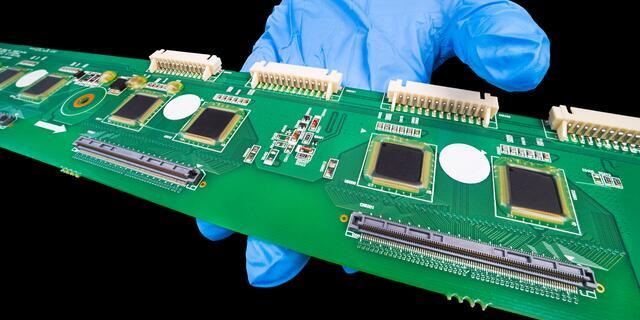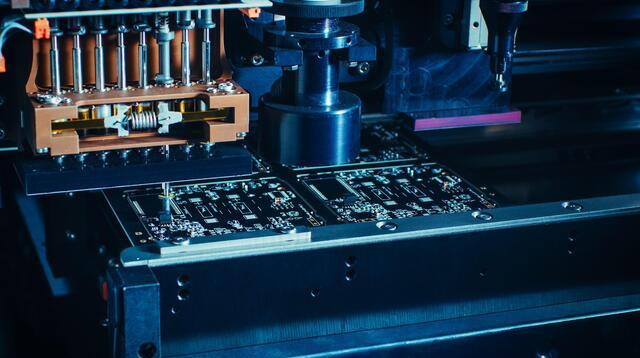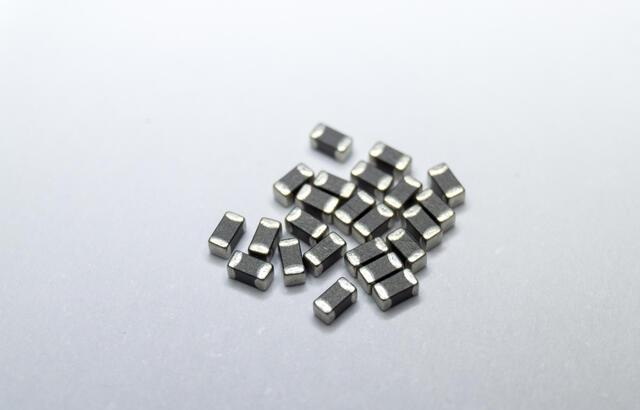Content Menu
● What Are SMT Components?
>> Types of SMT Components
>> Specialized SMT Components
● Advantages of SMT Components
>> Space Efficiency
>> Automated Assembly
>> Improved Performance
>> Enhanced Reliability
● The Process of Electronics Assembly Using SMT Components
>> 1. Design and Layout
>> 2. Printing Solder Paste
>> 3. Component Placement
>> 4. Reflow Soldering
>> 5. Inspection
>> 6. Testing
● Challenges in SMT Assembly
>> Component Handling
>> Thermal Management
>> Design Complexity
>> Cost Considerations
● Future Trends in SMT Technology
>> Miniaturization
>> Advanced Materials
>> Increased Automation
>> Sustainability Initiatives
● Conclusion
● FAQ
>> 1. What are some common types of SMT components?
>> 2. How does automated assembly work with SMT?
>> 3. What advantages do SMT components offer over traditional methods?
>> 4. What challenges do manufacturers face with SMT assembly?
>> 5. What future trends can we expect in SMT technology?
Surface Mount Technology (SMT) has revolutionized the electronics assembly industry, enabling the production of smaller, more efficient, and reliable electronic devices. SMT components are crucial for modern electronics, and understanding their role is essential for anyone involved in electronics design or manufacturing. This article will explore how SMT components work in electronics assembly, detailing their types, advantages, and processes involved in their integration into electronic devices.

What Are SMT Components?
SMT components are electronic parts designed to be mounted directly onto the surface of printed circuit boards (PCBs). Unlike traditional through-hole components, which require holes to be drilled into the PCB for insertion, SMT components are soldered directly onto the board's surface. This method allows for a more compact design and facilitates automated assembly processes.
Types of SMT Components
For beginners, it is essential to understand the various types of SMT components available. Here is a list of common SMT components:
- Resistors: Passive components that limit current flow and divide voltages. They come in various types, including fixed, variable, and specialty resistors like thermistors.
- Capacitors: Store and release electrical energy, used for filtering and smoothing signals. SMT capacitors include ceramic, tantalum, and electrolytic types.
- Inductors: Passive components that store energy in a magnetic field when electrical current passes through them. They are used in filters and energy storage applications.
- Diodes: Allow current to flow in one direction only, used for rectification and signal modulation. Common types include Zener diodes and Schottky diodes.
- Transistors: Semiconductor devices used to amplify or switch electronic signals. They are essential for signal processing and control applications.
- Integrated Circuits (ICs): Complex circuits that perform various functions, including processing, amplification, and signal generation. ICs can be analog, digital, or mixed-signal.
- LEDs (Light Emitting Diodes): Emit light when current flows through them; commonly used for indicators and displays. SMT LEDs are available in various colors and sizes.
- Connectors: Facilitate connections between different electronic components or systems. SMT connectors can be found in various configurations to suit different applications.
Specialized SMT Components
In addition to the common types listed above, there are specialized SMT components designed for specific applications:
- RF Components: These include RF amplifiers and filters used in wireless communication devices.
- Power Management ICs: These regulate voltage levels and manage power distribution within electronic devices.
- Sensor Modules: Integrated sensors that detect environmental conditions such as temperature, humidity, or motion.
Advantages of SMT Components
SMT components offer several advantages over traditional through-hole technology:
Space Efficiency
One of the most significant benefits of SMT is space efficiency. Since these components are mounted on the surface of PCBs rather than inserted through holes, manufacturers can design smaller and more compact electronic devices. This is particularly important in consumer electronics where space is at a premium. The ability to place components on both sides of a PCB further enhances space utilization.
Automated Assembly
SMT allows for automated assembly processes using pick-and-place machines. These machines can quickly and accurately place thousands of components on a PCB in a fraction of the time it would take to assemble them manually. This automation reduces labor costs and increases production efficiency. Additionally, automated assembly minimizes human error, leading to higher quality products.
Improved Performance
SMT components often have better performance characteristics due to their smaller size and shorter lead lengths. This results in lower inductance and capacitance, which can improve signal integrity and reduce electromagnetic interference (EMI). The compact design also allows for faster switching speeds in high-frequency applications.
Enhanced Reliability
The soldering process used in SMT creates a strong mechanical bond between the component and the PCB. This leads to increased reliability and durability compared to traditional soldering methods. Additionally, fewer mechanical connections reduce the risk of failure due to vibration or thermal cycling. The reduction in thermal stress on components also contributes to longer lifespans.

The Process of Electronics Assembly Using SMT Components
The assembly process for SMT components involves several key steps:
1. Design and Layout
The first step in the assembly process is designing the PCB layout. Designers use computer-aided design (CAD) software to create a schematic diagram that includes all necessary components. The layout must consider factors such as component placement, trace routing, thermal management, and manufacturability. Advanced simulation tools can help predict how the circuit will perform under different conditions.
2. Printing Solder Paste
Once the PCB layout is finalized, solder paste is applied to specific areas of the board where SMT components will be placed. This is typically done using a stencil that ensures precise application of solder paste on pads corresponding to each component. The quality of solder paste application is critical; too much paste can cause bridging between pads while too little can lead to cold solder joints.
3. Component Placement
After applying solder paste, pick-and-place machines position SMT components onto the PCB. These machines use vision systems to ensure accurate placement based on predefined coordinates. High-speed pick-and-place machines can place thousands of components per hour with remarkable precision.
4. Reflow Soldering
Once all components are placed on the PCB, it undergoes reflow soldering. The board is heated in a reflow oven, causing the solder paste to melt and create a strong bond between the components and the PCB as it cools down. The reflow profile must be carefully controlled to avoid defects such as tombstoning (where one end of a component lifts off the board) or insufficient wetting (poor solder joint formation).
5. Inspection
Post-assembly inspection is crucial to ensure that all components are correctly placed and soldered. Automated optical inspection (AOI) systems can quickly detect defects such as misaligned components or insufficient solder joints. In addition to AOI, some manufacturers may employ X-ray inspection for hidden solder joints or complex assemblies with multiple layers.
6. Testing
Finally, assembled PCBs undergo functional testing to verify that they operate as intended. This may include electrical testing using test fixtures or functional testing with actual signals under real-world conditions. Burn-in testing may also be conducted to identify early failures by subjecting devices to elevated temperatures or voltages over an extended period.
Challenges in SMT Assembly
While SMT offers numerous advantages, it also presents challenges that manufacturers must address:
Component Handling
SMT components are often small and delicate, making them challenging to handle during assembly. Manufacturers must implement careful handling procedures to prevent damage or loss during transport from storage areas to assembly lines.
Thermal Management
The compact nature of SMT assemblies can lead to heat buildup during operation. Effective thermal management strategies must be employed to dissipate heat efficiently and prevent overheating. Techniques such as heat sinks or thermal vias may be utilized depending on the application requirements.
Design Complexity
Designing PCBs for SMT can be more complex than traditional methods due to tighter tolerances and higher component densities. Engineers must carefully consider layout design to avoid issues such as crosstalk or signal integrity problems caused by closely spaced traces carrying high-frequency signals.
Cost Considerations
While automation reduces labor costs associated with assembly processes, initial investment costs for advanced machinery can be high. Manufacturers must weigh these costs against potential savings from increased efficiency and reduced material waste over time.
Future Trends in SMT Technology
As technology continues to evolve, so does the field of electronics assembly using SMT components:
Miniaturization
The trend toward miniaturization will continue as consumer demand for smaller devices grows—think wearable technology or IoT devices where size constraints are critical factors influencing design choices.
Advanced Materials
New materials are being developed for both PCBs and SMT components that enhance performance while reducing weight and size—such as flexible PCBs made from polyimide materials that allow bending without compromising integrity.
Increased Automation
Automation will play an increasingly vital role in electronics assembly processes—advancements like artificial intelligence (AI) could optimize production scheduling based on real-time data analysis while improving quality control measures through machine learning algorithms capable of identifying defects faster than human inspectors alone could achieve.
Sustainability Initiatives
With growing concerns about environmental impact associated with electronic waste (e-waste), manufacturers are exploring sustainable practices—such as using lead-free solder materials compliant with RoHS regulations while developing recycling programs aimed at recovering valuable metals from discarded devices at end-of-life stages.
Conclusion
In summary, Surface Mount Technology has transformed electronics assembly by enabling manufacturers to produce smaller, more efficient devices with improved reliability and performance. Understanding how SMT components work is crucial for anyone involved in electronics design or manufacturing—from engineers designing new products down through technicians assembling them on factory floors alike! As technology continues advancing rapidly across industries worldwide—including telecommunications networks driving connectivity demands—expect further innovations shaping our future electronic devices!

FAQ
1. What are some common types of SMT components?
Common types include resistors, capacitors, inductors, diodes, transistors, integrated circuits (ICs), LEDs, and connectors.
2. How does automated assembly work with SMT?
Automated assembly uses pick-and-place machines that quickly position SMT components on PCBs after applying solder paste before reflow soldering takes place.
3. What advantages do SMT components offer over traditional methods?
SMT offers advantages such as space efficiency; improved performance due to shorter lead lengths; enhanced reliability from stronger bonds; increased automation potential; lower production costs over time; reduced material waste; etc.
4. What challenges do manufacturers face with SMT assembly?
Challenges include handling small components delicately; managing heat buildup in compact assemblies; navigating complex PCB designs due to tighter tolerances; addressing cost considerations related both initial investments versus long-term savings achieved through efficiency gains realized via automation technologies employed throughout processes involved therein!
5. What future trends can we expect in SMT technology?
Future trends include further miniaturization of components; development of advanced materials enhancing performance while reducing weight/size constraints faced by designers today; increased automation utilizing AI technologies optimizing production schedules based upon real-time data analyses performed continuously throughout operations conducted within factories globally!




















